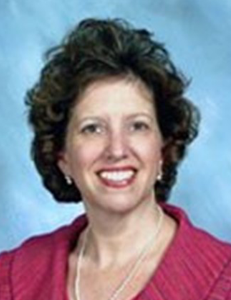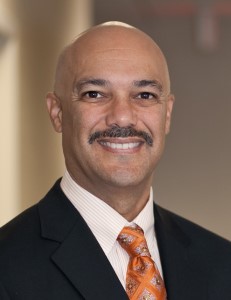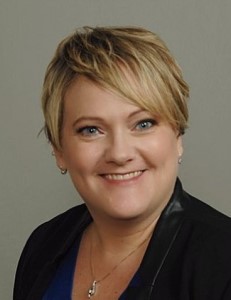Top Challenges, Opportunities of Medical Coding and Billing
COVID-19 impacted every aspect of medical coding and billing, but the challenges arising from the pandemic may reveal some key opportunities for improvement.

Source: Getty Images
- By April of last year, seemingly every news station in American was featuring the heroic efforts of physicians, nurses, and other clinicians fighting COVID-19. These providers transformed healthcare, implementing telehealth and virtual care, standing up new wards in hotels, sports arenas, and schools, and finding new ways to stretch precious supplies.
But behind those transformations was another revolution.
2020 was one of the most tumultuous years for coding and medical billing staff. Just as clinicians revolutionized healthcare, those involved in the revenue cycle had to find new ways to support those clinical transformations on the administrative side of healthcare.
Meanwhile, coders and medical billing staff faced the greatest change to the Medicare Physician Fee Schedule in about three decades on top of frequent off-cycle changes to major medical coding sets to account for the novel coronavirus and related conditions.
Three of these unsung heroes joined us at Xtelligent Healthcare Media’s Reimbursement Virtual Summit to discuss these challenges, how coders and billers overcame them, and what these changes signal for the future of medical coding and revenue capture.
Breaking Down E/M Coding Changes in 2021
Historic changes to evaluation and management (E/M) coding took effect on Jan. 1, 2021. New guidelines for the American Medical Association (AMA), for example, now allow physicians to select an E/M code based on total time spent on the date of the encounter or medical decision-making. This means physicians will no longer have to rely on a patient’s history or physical exam to determine the appropriate level of E/M coding. Prior to the changes, both items as well as medical decision-making were needed to identify the appropriate E/M code.
CMS also decided to finalize changes to Medicare Physician Fee Schedule in 2021 to align with the AMA’s guidance, resulting in the greatest change to E/M coding in 30 years, according to the agency.
Addressing the new virus in the room
“COVID definitely disrupted our processes,” Ginna Evans, MBA, RHIA, CPC, CRC, FAHIMA, coding educator for IM specialties at Emory Healthcare, said kicking off the panel discussion.
Evans was not alone. From truncated telehealth implementations and social distancing protocols to brand new codes and reimbursement policies, COVID-19 impacted every healthcare organization even down to the simplest of tasks, like showing up to work in the morning.
“During this time of COVID, I actually had the opportunity to work with several organizations that were kind of transitioning. It was the same problem that had to be solved in each one, which was, how do we make all of our processes remote,” shared Vanessa Moldovan, CPC, CPPM, CPMA, CPC-I, revenue cycle manager at HCA Healthcare and AAPC National Advisory Board member.
This shift to remote operations when appropriate only exacerbated the challenges of obtaining accurate clinical documentation and coding for a novel virus never documented before by providers.
The first code providers could use to document COVID-19 was an International Classification of Diseases, Tenth Revision, Clinical Modification (ICD-10-CM) emergency code created by the World Health Organization in March 2020 for confirmed cases after April 1.
Since then, there have been at least a dozen new ICD procedure codes related to the virus and many more changes to the Current Procedural Terminology (CPT) and Healthcare Common Procedural Coding System (HCPCS) code sets to account for COVID-19 and related conditions and procedures.
Meanwhile, healthcare organizations turned most outpatient visits to virtual care appointments in a matter of days. And while payers were seemingly on board with the shift to telehealth, promising to pay providers for the services, coders and billers were tasked with discovering how to document and bill for the new services amid frequent policy and regulation changes.
With so many changes, it is not surprising that financial leaders at US hospitals and health systems identified confusion over COVID-19 coding and claim requirements as one of the top issues impacting revenue cycle operations in 2020.
This may have led to an uptick in claim denials, according to new data from Change Healthcare. An internal analysis found that the average hospital claim denial rate increased at a more rapid pace during the height of COVID-19, hitting a new record of nearly 11 percent of claims denied upon initial submission in 2020.
A similar trend is likely to be seen on the physician side of medicine.
“Denials are just going to be out of control, and in my opinion, probably 70 percent of the dollars you're receiving are not accurate,” said Moldovan.
There is a new opportunity for coders and billers to identify different denials as result of new codes related to COVID-19, the physician revenue cycle management expert added, and that is going to take a lot of adjustment and education.
Spotlight on education
Education and training have been one of the tried-and-true best practices for coding and billing teams. Yearly updates to coding sets and payer reimbursement policies necessitate frequent training sessions for both coding and bill team members and clinicians documenting care at the point of service.
But COVID-19 has shone a spotlight on just how important education, training, and communication are to ensure accurate documentation and denial prevention.
“One of the things we did that was very successful in terms of telehealth is, we decided, as a team of coding educators, to develop a grid that had different information about the methods of communications with the patient,” Evans stated.
Some of the question the grid provided answers for include: Were the visits via Zoom? Were they telephone or portal visits? What were the documentation requirements? And what types of attestations were needed in the notes?
“That was the type of education we were trying to push out to providers and to our revenue cycle staff, so that the providers knew what they needed to have and the coders knew what they needed to look for in the notes,” Evans said.
Getting that information available in a timely manner and, more importantly, in one place has worked wonders for Emory staff who were already being stretched thin by the demands of the pandemic.

Ginna Evans, Emory Healthcare
Source: Ginna Evans“It gave them a place to go to look and understand what was needed,” Evans explained, “because so many providers did not understand how they could do an E/M visit via telehealth and do a physical exam.”
Similarly, Emory leveraged its established telehealth committee to ramp up virtual services quickly. The team met every day at first and included providers from each specialty and revenue cycle staff so everyone was on the same page about how to execute a telehealth strategy, including how to document and bill for those services.
These educational efforts were not a big leap for organizations like Emory, which has fostered a culture of coding and bill education. However, the pandemic did reveal some areas in which education and training can improve to make more of an impact on documentation and coding accuracy as well as claim denial rates.
“We’ve maybe found better ways of making sure we're sending information in one format to everyone, so they all have that. I definitely see that we would make sure we're sending that same message consistently going forward,” Evans stated.
“Even with the new off-cycle ICD-10 codes that came out or trying to provide training and education to everyone on those are the new E/M codes that went into effect in January for office visits. Things like that using the same types of format.”
Showing clinicians the impact of complying with new coding and documentation requirements is also another best practice for education moving forward, according to Moldovan.
“They're very focused on treating their patients, so if you’re going to divide your time to learning something new, you have to tell me the impact that it's going to have. If maybe there was a learning curve for some people who are listening to this, that maybe focusing on that next time, that's really, really important,” Moldovan explained.
The impact could be as simple as a reduction in documentation burden, which was the impetus behind new E/M coding practices in the new Medicare Physician Fee Schedule rule, or even revenue losses, which according to Evans, are frequently only seen by clinicians and their administrators after a lack of compliance has impacted their pocketbooks.
But for those clinicians and administrators who are reluctant to attend trainings or may delete evites and emails before reading them thoroughly, technology can help.
Technology adapts to the times
Practice management solutions, computer-assisted coding solutions, and other technologies have helped healthcare organizations fill coding and billing gaps for years now. And during normal operations, the solutions seem to be supporting a strong revenue cycle.
However, COVID-19 even threw vendors a curveball when it came to designing technology that aligns with coding and billing workflows even as they rapidly change to accommodate new codes and services.
“We provide software to almost 18,000 physicians and there is no revenue cycle if they're home because they can't see patients in the middle of a pandemic,” Michael B. Rivers, MD, former practice owner and director of ophthalmology at Modernizing Medicine, shared during the panel discussion.
Like healthcare organizations implementing telehealth, the software company designed for specialty EHR, practice management, and other solutions had to revamp their products. Changes included a new telehealth option within the solution, off-site patient check-in, and more automated coding and documentation workflows at the point of service.
“In our ecosystem, when the providers are documenting [a telehealth visit] the coding is done at the point of care by the EHR,” Rivers elaborated. “So if a patient is scheduled for telemedicine visit, then the appropriate modifiers came up on the bill automatically so that it prevented some of the work needing to be done on the backend. We tried to provide better tools for those billers to monitor denials because it was the wild, wild west from the beginning.”
Medical billing and coding has been a major use case for automation in healthcare, with many vendors leveraging artificial intelligence, natural language processing, and other more advanced analytics to scour patient records and identify the appropriate codes based on clinical documentation. These solutions are typically referred to as computer-assisted coding.

Michael B. Rivers, Modernizing Medicine
Source: Modernizing MedicineProviders have praised computer-assisted coding solutions lately, citing high satisfaction with vendors and capabilities and increased coding productivity and accuracy.
But as of now, computer-assisted coding and other automated coding systems still need manual coders behind them to really ensure coding accuracy, according to some reports. Many organizations also do not use the technology at all.
“I know there are some electronic records that do take the documentation and do the billing for the providers, and we don’t have that,” Evans said. “So it’s a matter of them going into the billing system and selecting the correct codes.”
This has been a challenge, especially during the pandemic. Emory just hasn’t had the “bandwidth to look at every bill from a provider” to ensure accurate coding amid all the changes, Evans added.
Instead, the health system has been aggressive about updating coding edits and staying on top of payer policy changes to make sure denials stay down.
“We really put a lot of things in place and built some edits on the backend to start catching, for instance, the modifier for telehealth varied by payer,” Evans said. “Now, of course, that doesn't stop things when they quickly start making changes, or maybe they're no longer paying for telephone visits and things. You have to constantly stay on top of those.”
The lack of bandwidth though, and perhaps the shortcomings of some practice management systems, may push providers and even vendors to bolster resources around coding and billing.
“It can be a shift in thinking that, even if it means applying more resources in order to manage your denials, that's where you're going to get the barometer of everything that's going on in your practice, through those denials,” Moldovan stated. “Maybe with something as big as this, maybe some of the practice management systems that are a little bit behind, denial management will step it up so that we can really be more effective in that.”
But healthcare is taking a stop toward more automation and COVID-19 has proved that, Rivers stated. Moving forward, the software expert anticipates a shift to more cloud-based services in light of remote workforces. Closing the feedback loop will also be a key opportunity for technology in the coding and billing space.
“But it's a sea change, what you find is that all of a sudden, the billing office that's doing all this claim scrubbing and saying clinical documentation is insufficient, and then going back to the providers or going back to the technicians, a lot of that loop goes away because it's done right the first time. So I think that technology can help with that,” Rivers said.
Medical coding and billing of the future
While many believe 2020 will have been a unique year, the changes in medical coding and billing may be a signal of new times ahead.
CMS finalized historic E/M coding changes, for example, to reduce administrative burden but also obtain more detailed, accurate data about patients and care delivery.
“That's a trend that's going to get worse not better,” Rivers warned. “Insurance companies, certainly CMS, are starting to understand the value of data. Whether it's increasing the number of quality measures or its Category 2 codes, or it's subdividing an existing code into five different subcategories, they get more data and they get more information. That trend is going to continue, and that's going to be to make it more and more of a challenge for us to keep up.”
This may lead to an increase in medical record requests from payers as they figure out just how to accommodate new services, too, Moldovan added.

Vanessa Moldovan, HCA Healthcare
Source: Vanessa MoldovanUnfortunately, these requests are still primarily handled manually either through mail or fax even in 2020, creating administrative nightmares and extra costs for providers. Therefore, revenue cycle teams, including their coders and billers, need to shift their mindset to prevention.
“Anytime I'm managing revenue cycle, anytime there is going to be some kind of a change and every year CPT changes, we usually do put things on a radar and there usually is an uptick in denials as we're getting used to the payers and their new guidelines,” Moldovan stated. “We're like, okay, we're shifting over. And now E/M is changing guidelines, so we're shifting over maybe on a focus or higher diligence and that would result in putting edits in place and other steps in the revenue cycle process to kind of prevent those denials.”
“But I think that anybody who is a part of a revenue cycle or monitoring revenue cycle, anytime there is change, have that mindset of, ‘Okay, we need to change our focus so that we can prevent denials instead of working them all the time at the backend.’”
But there is a light at the end of the tunnel with these historic documentation and coding changes.
“Now I'm getting asked to come and do high-level reviews with the providers and as I do audits on their notes to look at how they're doing, thankfully, for the most part, they're doing really well,” Evans said. “Personally, I think that the new guidelines really help some of these providers, as long as they have the documentation.”
Clinicians are starting to see how their documentation supports perhaps a 99214 code rather than a 99213 and new E/M coding guidelines are helping coding educators like Evans relay that to those at the point of care.
And at the end of the day, accurate coding ensures the organizations and even public health officials have the best data to determine population health management. From a revenue cycle management perspective, it also helps the organization get paid appropriately for their patient population and the services they receive.
For more information on Xtelligent Healthcare Media virtual events, visit our website.
